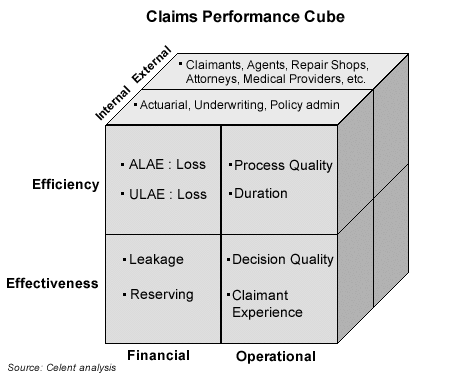Technology-Enabled Claims Performance Improvement
Abstract
An insurer that thoughtfully and consistently applies new claims technologies can achieve a substantial improvement in claims performance: a 4 to 5 point improvement in the combined ratio.
In a new report, , Celent describes how six property/casualty insurers have used new claims systems to enable changes in three key areas of claims performance: process and information, organization, and analytics. The report also provides a graphic framework, the claims performance cube, for distinguishing among eight types of performance improvement.

The deployment of a new core claims system provides an opportunity to change the form of claims information and data, how it is accessed, and the processes that depend on it. One of the most common changes is that all (or nearly all) information becomes digital as paper claim files are eliminated. Workflow is easier to manage and moves more quickly. The experience of claimants and of their agents improves. Reserving accuracy increases. And compliance improves as required forms and correspondence are automatically created and sent by the claims system.
New claims technology gives insurance companies the opportunity to revisit both their organizational structures and their staffing levels to put them in better alignment with organizational priorities and skill requirements.
Several insurers are beginning to use claims analytics to provide systematic loss information to their front end product development, pricing, and underwriting activities.
"Looking at the property/casualty industry as a whole, there is a very uneven use of modern claims technology," says Donald Light, senior analyst and author of the report. "Future developments will reflect this split. Some insurers will have to play catch-up. Others will deepen their understanding and broaden their use of claims systems functionality. Both types of insurers will find their own variation on the theme of using fewer resources to restore claimants to their prior state quickly and fairly."
The 22-page report contains three figures and two tables. A table of contents is available online.

